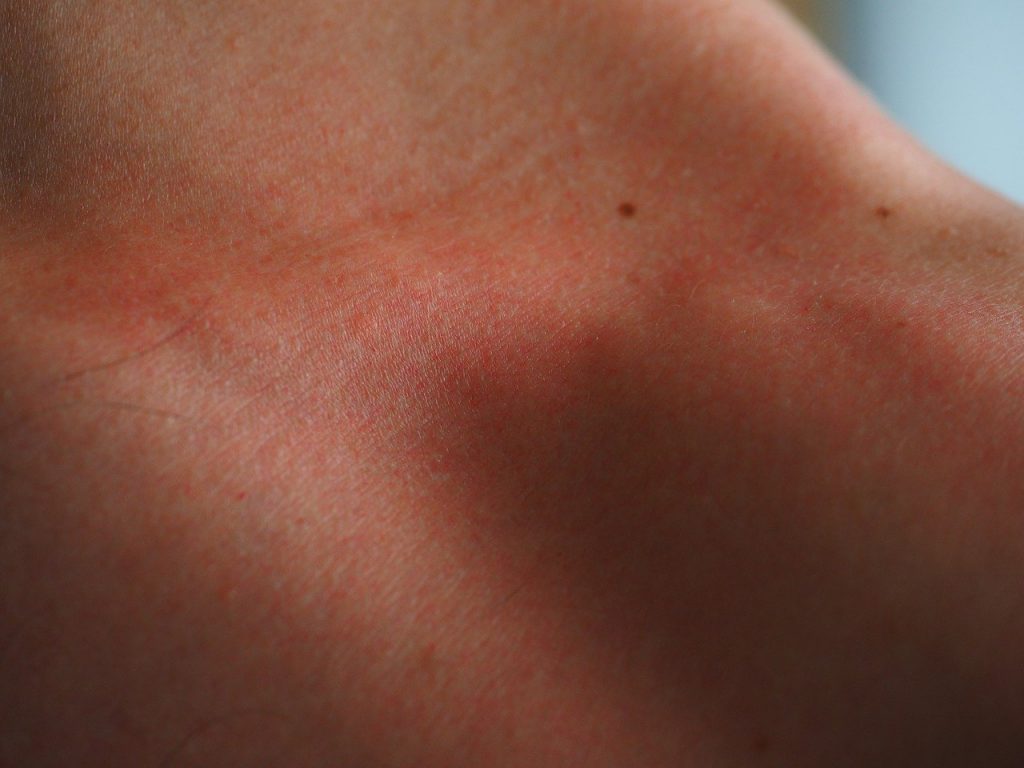When the sun grows stronger and the weather becomes stronger, it’s tempting to spend every day hiking in the wilderness and enjoying the great outdoors. But as much as hiking presents a great opportunity of interacting with nature and unwinding, you are also at risk of developing sunburns, especially if your skin is not adequately protected. Apart from being painful, sunburns can also lead to long-term skin damage. While spending time in the wilderness is great, you also need to take the necessary measures to prevent sunburns. Here are some effective tips to prevent and treat sunburns during your summer hike.
Wear Protective Clothing
Your clothes provide the first line of defense against the harmful UV rays. However, the level of protection will depend on various factors such as the material used, the color, weaving density and fit, among others. When choosing your summer hiking clothes, you should pay attention to the following:
- Color: Different colors provide different levels of UV protection. For instance, dark colors like navy blue and black, provide a higher level of UV protection, compared to lighter colors such as pastels and whites. For instance, your favorite white cotton T-shirt only has an UPF protection of around 5 to 7. And when that t-shirt becomes wet, it’s UV protection drops significantly to around 3. While you might want to wear this t-shirt during your hike, it will not provide adequate protection against UV rays. In short, the darker the color, the higher the level of UV protection.
- Weaving density: Just like color, the texture and weave of your hiking clothes can determine their level of UV protection. Synthetic fibers like rayon and polyester provide the best protection against the harmful UV rays. Also, heavy, tightly woven and dense woven fabrics like corduroy, denim, and wool will also provide adequate levels of protection from UV rays. On the other hand, lightweight, natural fabrics like cotton, silk, and crepe will not provide adequate protection against the sun’s rays, since they are lighter.
- Design and fit: While you may want to hike with short-sleeved t-shirts, they will leave large parts of your arms exposed. Therefore, it’s advisable to wear long-sleeved, dark tops when you are hiking. Also, avoid wearing tight clothes during your summer hike, if you want to minimize your body’s exposure to UV radiation. Tight-fitting clothing will eventually stretch, thus allowing more UV rays to pass through. Instead, opt for loose-fitting pants and t-shirts.
Use Sunscreen
Whether you are going to hike for a few hours or you intend to hike the whole day, it’s important to apply sunscreen before you head out. However, with so many brands of sunscreen on the market, choosing the right one for your needs can sometimes prove to be overwhelming. When buying sunscreen, you need to consider its sun protection factor or SPF, the ingredients used as well as its water and sweat resistance capabilities.
If you will only be hiking for 2 to 3 hours, then you should use a sunscreen whose SPF is at least 15 or higher. An SPF of 15 blocks approximately 93% of UVB rays. On the other hand, if you intend to spend your entire day hiking in the woods, then you should choose a sunscreen whose SPF is 30 or higher. Sunscreen whose SPF is 30 or higher will block approximately 97% of UVB rays. It’s highly advisable to choose a broad-spectrum sunscreen. Broad-spectrum sunscreens are formulated to protect against UVB and UVA rays, which are both harmful to your skin. As you shop for sunscreen, you might also come across some types that claim to have an SPF rating of 50 or higher or one that can block 100% of UVB rays. The reality is, no sunscreen can completely block UVB rays. Choosing a sunscreen that claims to have an SPF rating of 70 or above doesn’t mean that you will get more protection. It’s more of a marketing tactic to make you spend more money.
Apart from the SPF rating, you should also pay attention to the ingredients used to formulate a sunscreen. Sunscreen lotions are made using different ingredients. Some ingredients might be friendly to your skin while others might cause an outbreak of pimples or lesions. If your skin reacts after using a certain type of sunscreen, it’s highly advisable to change it and choose a different one. Most people are sensitive to para-aminobenzoic acid or PABA, which is one of the most commonly used ingredients in sunscreen. In case your skin is sensitive to this compound, you should look for sunscreens labeled “PABA free.” Also, you should avoid using sunscreens that contain oxybenzone, since it can penetrate your skin, leading to hormonal imbalance. Some countries have already banned sunscreens that contain oxybenzone.
You should also check the water and sweat resistance of any sunscreen before you purchase it. Without a doubt, you are bound to sweat during your hike. Water-resistant sunscreens are formulated to perform well, even in the presence of water and sweat. When it comes to water and sweat resistance, you should choose a sunscreen with a rating of 40 or 80. However, it’s important to note that when you wipe your face, the sunscreen will come off. Therefore, regardless of its water and sweat resistance, you need to reapply it immediately after toweling off. Once you’ve picked your preferred sunscreen, make sure you carry enough for your trip. Also, apply at least 15 minutes prior to sun exposure, and then reapply after every two hours.
Avoid Overexposure
As much as you would like to hike from dawn till dusk, hiking when the sun is too hot increases the risk of sunburns. The sun is usually at its peak from 10 am to around 2 pm. Therefore, it’s advisable to avoid hiking during these hours. And if you must hike, then you should do it moderately. Make sure that you take a break and rest under shade after every 30 to 45 minutes. You should also take this opportunity to hydrate. You can also plan out your route in a way that you will be hiking in areas with enough shade during the peak sunshine hours and then proceed to the exposed areas in the evening when the sunshine has subsided.
Eat Foods Rich in Antioxidants
While minimizing exposure to UV rays is usually the best method of preventing sunburns, there are certain foods that can protect your skin and minimize damage. Foods rich in antioxidants will not only help to protect your skin against harmful UV rays but they will also repair and remove damaged cells. Therefore, when you are packing food for your hiking trip, make sure you include some carrots, wild berries, salmon, olive oil, nuts and seeds, and some green tea. Wild berries are full of antioxidants. These antioxidants will help your body to fight off free radicals, which can damage your skin as a result of sun exposure. On the other hand, salmon, nuts, and seeds are full of omega-3, which helps to maintain your skin’s integrity while preventing inflammation.
Cover Your Head
Most hikers tend to underestimate the importance of a hiking hat. While it might not be as important as your hiking boots, a hiking hat should always be present in your backpack. It will protect your head from harsh sun rays, thus helping to prevent sunburns. But with so many different types of hiking hats on the market, which one should you purchase? First, make sure you choose a hiking hat whose brim is approximately 2.5 inches to 4 inches all around. Such a hat will provide ample protection for your head without getting in the way of your eyes. Also, go for one that’s made of lightweight materials. It should also have a high UPF rating of at least 15 or more. Your hiking hat should also be breathable and comfortable. After all, you will be wearing it for many hours. Therefore, you need to choose a hat that offers adequate protection against harmful UV rays, while keeping your head comfortable.
Treating Sunburns
Mild sunburns might not require a visit to the physician since they are nothing more than some tenderness and redness in the affected areas. However, if blistering has already occurred and the pain is unbearable, then you should seek medical intervention immediately. Severe cases of sunburns can also lead to chills, fever, weakness, nausea, and vomiting, as well as extreme weakness. If you have experienced any of these symptoms, then you should discontinue your hike and visit a physician as soon as possible. When left untreated, severe cases of sunburns can cause permanent skin damage while increasing the risk of skin cancer. Your physician will assess the extent of the skin damage and then recommend the most appropriate treatment approach. For example, they might prescribe over-the-counter medications like ibuprofen, which can help to relieve the pain and minimize the inflammation caused by the blisters. Hydrocortisone creams can also help to alleviate the itching and inflammation. However, you should always remember that prevention is always the best treatment for sunburns.
Final Thoughts
While most cases of sunburns will resolve on their own, however, they might ruin your hike completely, especially if the condition worsens. Therefore, if you are a mountaineer, a hiker or just someone who loves spending time in the wilderness, it’s important to ensure that your skin always has adequate protection all through. Wear the right clothing, apply sunscreen and eat foods that can help to prevent sunburns.





0 comments